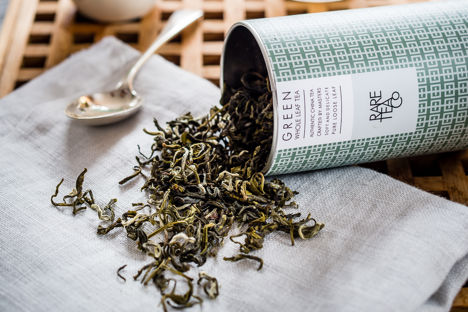
Steeped in tradition: green tea explained
Henrietta Lovell, also known as the Rare Tea Lady, talks us through the intricacies of green tea and how the cheaper, bitter varieties in the supermarkets are nothing like the real thing.
Steeped in tradition: green tea explained
Henrietta Lovell, also known as the Rare Tea Lady, talks us through the intricacies of green tea and how the cheaper, bitter varieties in the supermarkets are nothing like the real thing.
Green teas are made, like all tea, from the leaves of the tea plant Camellia Sinensis. This debunks one of the most common myths about green tea, that it comes from a different plant or herb and as such is lower in caffeine than black tea. If you are looking for an early morning caffeine hit a green tea will pack as great a punch as any black tea; a strong flavour doesn’t necessarily mean more caffeine. What makes a tea green is the way it is processed, with the leaves being stopped from oxidising.
Just like wine, there are thousands of different green teas, ranging in quality and taste. Industrially-grown green teas are often tannic and bitter, because the sweet amino acids have been lost during the machine processing. It is these flavours people often associate with green tea, drinking it almost as a chore to try and reap the many health benefits associated. But it is in the hand-made green teas that the good stuff can be found in its highest form, and they are utterly delicious.
To get the best out of green tea, the key is to use a high quality leaf and a lower water temperature. For good quality green leaf tea, the ideal temperature is 70°C as higher temperatures bring out the tannins and astringency. This temperature extracts all the beautiful sweet notes and will give you a far more delightful drink. If you don’t have a temperature controlled kettle, this can be achieved by adding 50ml of cold water (around two dessert spoons) per 150ml (a tea cup) into the teapot before adding boiled water.
Whole leaf China tea
Green tea has been enjoyed for 5000 years and is now drunk around the world for its flavour and health benefits. However, this popularity has given rise to plenty of low grade options, industrially-grown with pesticides and herbicides, resulting in bitter brews. One of my favourite whole leaf green teas is made in the mountains of Fujian following millennia of tradition. It is carefully hand-crafted in a wok to preserve the whole leaves and buds on a farm which uses no electricity, and is ideal with food. I love it for breakfast with smoked salmon and poached eggs.
Genmaicha
Genmaicha is a rather special green tea. It is a blend of Japanese Sencha with toasted brown rice, resulting in rich, vegetal notes of buttery asparagus and a popcorn aroma. It’s a perfect warming afternoon pick me up for the winter months. Traditionally, Genmaicha was made with old, inferior or lower grade sencha and the toasted rice is used to disguise the lower quality. However, these days you can buy top grade organic Sencha with organic Japanese toasted brown rice crafted by Moriuchi san – one of the most revered tea-masters in Japan. Sometimes traditions need updating.
Matcha
Matcha is made from ground Japanese gyokuro, a precious variety of Sencha. The time the plant spends in the shade intensifies chlorophyll growth in the leaves, resulting in the vivid green colour of the powder. Good matcha has both strong, tannic bitterness combined with a grassy sweetness. It possesses the perfect balance: bright and strong yet smooth and mellow.
Malawi steamed green
This green tea is steamed, resulting in an exquisite vegetal flavour. With such high quality tea it can be infused with water as low as 37°C. This style of green tea is one of the most extraordinary I have tried. I discovered it in Malawi – not a place traditionally know for green tea or for the steaming method. The varietal was planted in 1921 and has been shown to have the highest level of antioxidants of any tea we have tested. This tea goes wonderfully with sweet and savoury food – try it with buttery shortbread.


